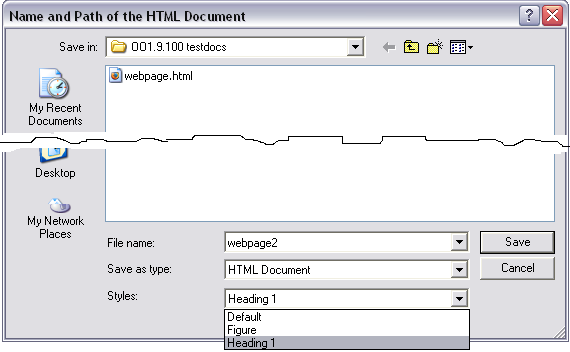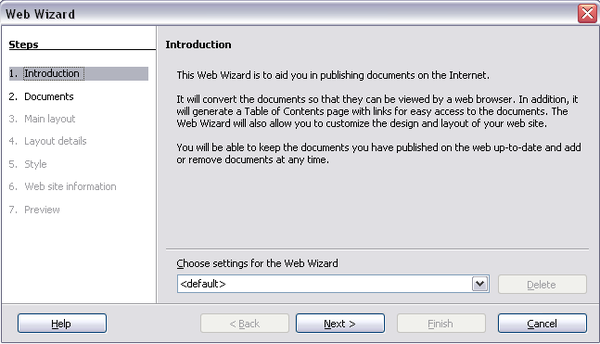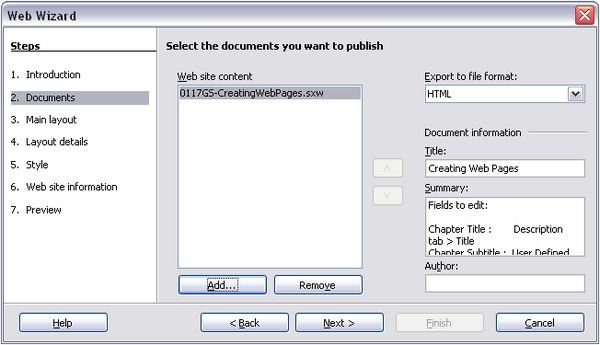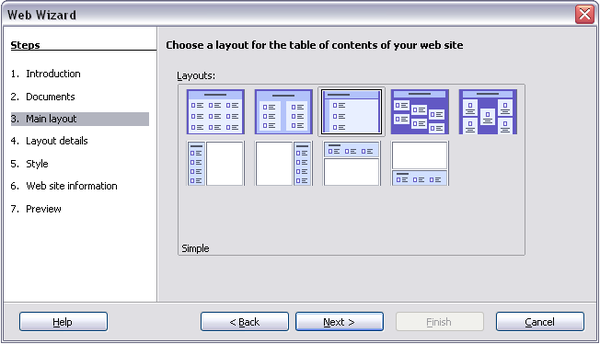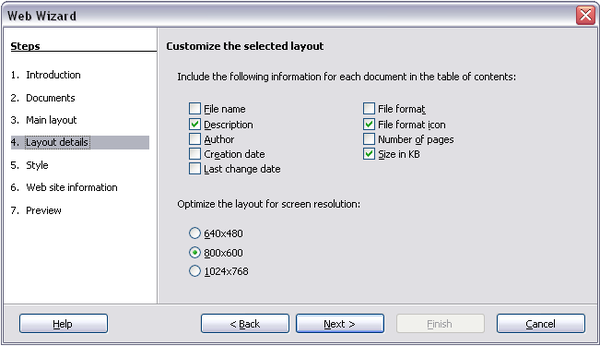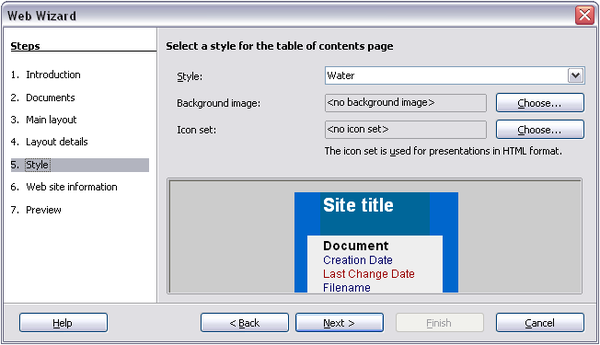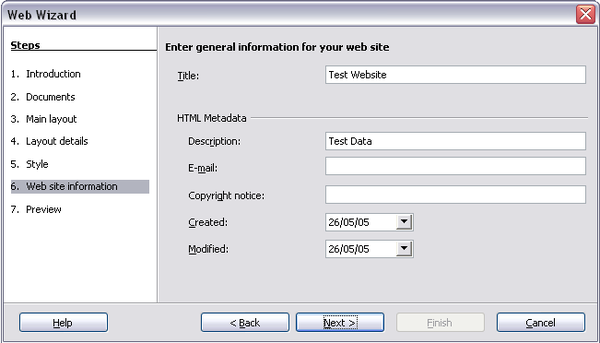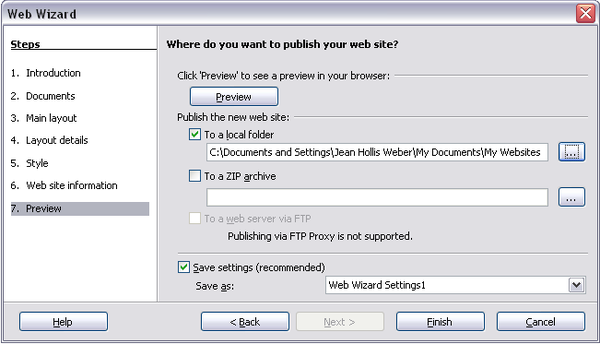Saving Writer documents as web pages
Saving Writer documents as web pages
Writer's HTML capabilities include saving existing documents in HTML format, creating new documents as HTML and creating several different types of web pages using a wizard.
The easiest way to create HTML documents is to start with an existing Writer document. You can view it as it will appear on a web page by using View > Web Layout.
Saving a document as a single web page
To save a document as a single web page (HTML format), select Save As from the File menu and specify HTML Document as the file type.
Saving a document as a series of web pages
Writer can save a large document as a series of web pages (HTML files) with a table of contents page. To do this:
- Decide which headings in the document should start on a new page and make sure all those headings have the same style (for example, Heading 1).
- Select File > Send and click on Create HTML Document.
- In the dialog (Figure 3), enter the file name to save the pages under. Also specify which style indicates a new page (as decided in step 1).
- Click Save to create the multi-page HTML document. (For those who may be interested, the resulting HTML files conform to the HTML 4 Transitional.)
Creating web pages using a Wizard
OOo's Web wizard allows you to create several types of standard web pages. To use it:
Select File > Wizards > Web Page. On the first page of the Wizard (Figure 4), choose settings and click Next.
Note: If this is your first web page, the only settings option is Default.
Choose or browse to the document you would like to format and add the Title, Summary and Author information as shown in Figure 5. Click Next.
Chose a layout for the web site by clicking on the layout boxes shown in Figure 6. Click Next.
Chose the information to be listed and the screen resolution, as shown in Figure 7. Click Next.
Select a style for the page. Use the drop-down list, shown in Figure 8, to choose different styles and color combinations. You can browse to a background image and icon set from the Gallery. Click Next.
Enter general information such as Title and HTML Metadata information, as shown in Figure 9. Click Next.
Chose where to save the file and preview the page if you wish, as shown in Figure 10. Click Finish.
To edit or view the document's underlying HTML code, click View > HTML Source or click the HTML Source icon ![]() on the Main toolbar.
on the Main toolbar.
| Content on this page is licensed under the Creative Common Attribution 3.0 license (CC-BY). |
[[Category:Getting Started (Documentation)]
